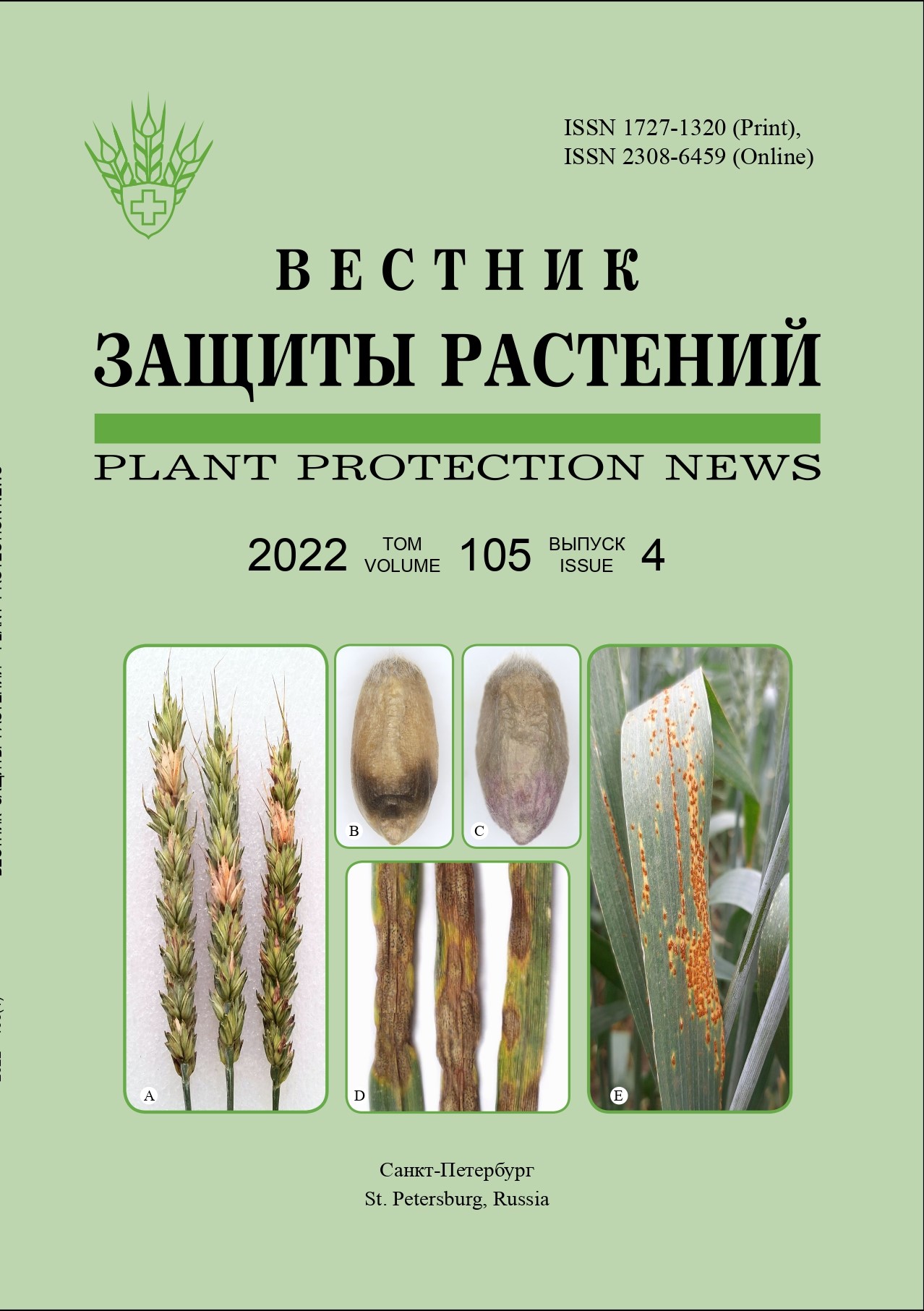Protection of spring wheat with biopreparations and fungicides in the forest steppe of Priobye: II. Activity under conditions of moisture deficiency
Keywords:
spring wheat diseases, biofungicides, biological efficacy, cellulolytic activity, plant residues, yieldAbstract
The effectiveness of chemical, fungal and bacterial fungicide treatments of spring soft wheat seeds and stands against major diseases was compared on leached chernozem of Novosibirsk region in 2021. Biological preparations including Sternifag, WP (Trichoderma harzianum) showed effect as early as in the tillering phase. The biologicals’ effectiveness in root rot suppression was comparable to Scarlet, ME (imazalil+tebuconazole) and amounted to 62–64 %, while Sternifag, WP halved the disease development. By the end of the growing season, all treatments, including the chemical one, equally suppressed root rot development; the best option was Scarlet, ME + Vitaplan, WP (Bacillus subtilis) with biological efficiency of 38 %. In the case of severe pressure by Septoria blotch (33 % in control), the most effective treatment was spraying the crop on the earing stage with Titul 390, KKR (propiconazole), which reduced the incidence of Septoria blotch by 84.3 %, while biologicals had no effect. The powdery mildew was best suppressed by seed treatment with Scarlet, ME (73.9 %), and the brown rust was best suppressed by Scarlet, ME + Vitaplan, WP (78.8 %). The vegetation treatments inhibited the powdery mildew by 41–54 % but didn’t show a reliable effect against the brown rust. Seed treatment with microbial fungicides increased soil cellulolytic activity by 1.5–1.8 times while chemical disinfectant reduced it. The amount of plant residues decreased by 2.5–2.8 times due to the application of Sternifag, WP. The greatest increase in grain yield was obtained due to chemical fungicides - 0.64 t/ha, while biological preparations resulted in additional 0.25–0.33 t/ha.



